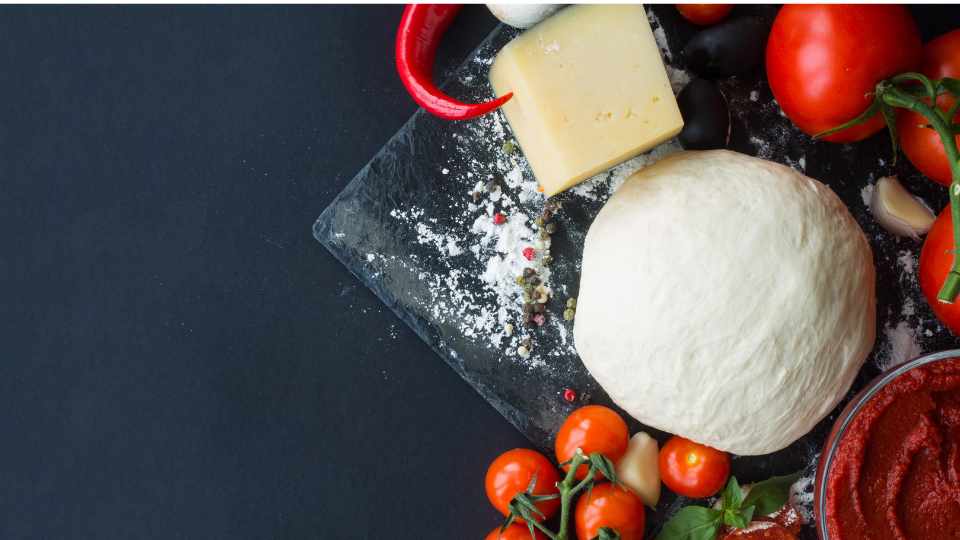What Spices Go On Pizza? (A Complete List)
Are you wondering what spices go on pizza dough?
A well-seasoned pizza can make all the difference between a tasty slice of heaven and a bland dish. Pizza seasonings have been used for decades to bring out the classic flavors and aromas of Italy’s favorite fast food.
There are many traditional ingredients in pizza seasoning, as well as some unexpected alternatives that can give your homemade pizzas an extra zing. And in this short guide, we will explore them all.
Common Spices For Pizza
Oregano
There is no spice more classic or essential for a pizza pie than oregano. Prized in Italian culture, oregano has been used since ancient times as an herbaceous flavoring and for its medicinal properties.
Its unique aroma and floral flavor comes from chemical components such as linalool, geraniol, carvacrol and thymol. All of which contribute to its versatility.
Whether it’s fresh or dried oregano that you’re looking for, both types can be used both as a topping or sprinkled onto sauce before adding your favorite toppings to the pizza. Doing so often supplies extra floridity when combined with sweet tomatoes, zesty cheese and savory meats alike.
Basil
Basil is a popular addition to pizza seasoning blends and it typically provides sweet, herby flavors. It is commonly used in Italian cooking and it often forms part of the topping that you’ll find on many pizzas.
This fragrant herb works especially well when combined with oregano as they are both members of the mint family. Basil has sweetness unlike its relative oregano, which can be stronger and more bitter.
Basil adds freshness when added to sauces for spreading over the crust prior to baking; however, it can also be sprinkled generously over cooked food for an extra boost of fragrance and flavor whether fresh or dried form .
Garlic
Garlic is a key ingredient for many pizza seasoning blends and toppings. It has been used in Italian cooking for centuries, thanks to its flavorful and aromatic properties.
When roasted or sautéed, garlic takes on mellow notes that elevate any pizza it graces. Garlic can also be sprinkled onto the top of a pizza before baking to give it an added boost of flavor.
For those looking to add some unique flavors into their pizzas, garlicky-herb combinations such as rosemary-garlic, onion-garlic, and fennel-garlic are great options that will bring out the best in your homemade pies.
Red Pepper Flakes
Red pepper flakes, also known as chili flakes or crushed red peppers, are a common spice used on pizza. They have been popular in South Italy since the 19th century and consist of dried and crushed red chili peppers to give dishes a hot and spicy flavor.
Red pepper flakes can be added directly onto the pizza before or after baking for a subtle yet flavorful kick.
It is also possible to combine different spices like oregano, basil, thyme, black pepper, paprika etc., with oil or tomato sauce to create an aromatic seasoning blend specifically designed for pizzas.
Alternative And Unique Spices For Pizza

Rosemary
Rosemary is a great spice to use on pizza for serious flavor, with its strong pine-like flavor. It can be used either in fresh bunches or as a dried herb, and is known to bring out the other flavors of the dish rather than overpowering them.
Rosemary also has aromatic properties which can be utilized when cooking with it.
When creating homemade pizza seasoning blends, rosemary typically rounds out the classic combination of oregano, basil and thyme with its woody notes. However, most recipes advise using sparingly if mixing multiple herbs together due to its bold flavour.
Thyme
Thyme is an aromatic herb commonly used in Italian and French cuisine. It has a strong perfume-like taste that is slightly sweet and can make recipes take on a synthetic flavor if used too heavily.
For pizza, thyme can add unique layers of aroma and flavor to the dish when added in moderation. Most pizza seasoning blends contain oregano, basil, garlic powder, red pepper flakes, and fennel as well as some thyme for added sweetness.
When using this alternative spice for pizzas, it’s important to keep it low. No more than 1 teaspoon per 15 ounces of tomato sauce should be used at one time, so they don’t overpower the other ingredients or cause itches.
Fennel Seeds
Fennel seeds are a great addition to your homemade pizza seasoning. They add an extra layer of flavor to the dish and provide that delicious licorice-like taste.
Fennel is traditionally used in Italian cuisine, particularly in the making of sausages and spice blends such as Chinese five spice powder, which also includes star anise, Szechuan peppercorns, cinnamon and cloves.
When it comes to pizza seasonings, fennel can be combined with herbs like oregano, basil, garlic powder or dried thyme for some added depth in flavor.
Additionally, you can make your own unique combination by adding paprika as well for a hint of smokiness or even mix the spices together with olive oil or tomato sauce before baking or sprinkle them on top afterward.
Paprika
Paprika is a must-have when it comes to pizza toppings. This mild-flavored red powder adds a sweet yet slightly smoky flavor that pairs perfectly with the classic tomato base.
Paprika has also become popular in vegan cooking, making it an excellent choice for those avoiding animal products.
This versatile spice can be sprinkled on before baking, mixed with olive oil and spread across the crust for extra flavor, something professional chefs often do, or alternatively tossed into tomato sauce for added depth and richness.
Tips For Using Pizza Spices
Experiment With Different Combinations
Experimenting with different combinations of spices can be key to unlocking the full potential of pizza.
By mixing up traditional Italian herbs and spices like oregano, garlic, basil, and red pepper flakes in never before seen combinations you can create your very own unique pizza seasoning recipes that will tantalize any taste buds.
Experimentation doesn’t stop at selecting different types of spices either – there is also versatility when it comes to timing as well!
Sprinkling on select spices before baking can inject flavor into all layers while adding other seasonings after baking enhances crunchier textures around the outer crusts plus an added depth too!
Whether it’s old-school classics or something new entirely playing around with flavor is not only encouraged but essential for creating truly mouthwatering pizzas.
Sprinkle On Before Or After Baking
Sprinkling pizza seasonings before or after baking is an easy way to add flavor and texture to homemade pizzas.
When sprinkling seasonings on top of the pizza before baking, they will melt into the cheese and sauce creating more intense flavor. For an extra burst of herbs and spices after baking; simply sprinkle your toppings with fresh basil or oregano after it has been cooked in the oven.
Adding fresh herbs will give you brighter flavors that contrast nicely against melted cheese or tomato sauce – think rosemary combined with mozzarella or parmesan! Experimenting with different combinations like these are sure to add a unique twist to any classic recipe.
Mix Spices With Olive Oil Or Tomato Sauce For Extra Flavor
Combining these spices with either olive oil or tomato sauce is a great way to bring out extra flavor in your pizza topping.
Both olive oil and tomato sauce act as powerful carriers for aromas and flavors that when combined will give your dish an incredible taste. Olive oil helps disperse herbs such as oregano more evenly over the toppings while tomato sauce builds upon this by adding its own sweet acidity that brings depth to your flavors.
Together they provide enough richness to balance out any strong tastes yet still creating a delicious meal any individual would enjoy.
Don’t Be Afraid To Try New And Unconventional Spice Blends.
Experimenting with spice blends can take your pizza from a standard everyday meal to something truly special. Adding unique spices and herbs to homemade pizzas provides the perfect opportunity to get creative.
For example, za’atar, a classic Middle Eastern blend of dried herbs such as oregano, thyme, sesame seeds and sumac packs a punch of flavor while adding an exotic twist.
Garam masala is another fun option that combines cumin powder, coriander powder, pepper powder amongst other Indian spices for intense spiciness.
Conclusion
Pizza seasoning is an essential element of a great homemade pizza and can be used to add flavor to pasta, vegetables, and other dishes. Common spices like oregano, basil, red pepper flakes, garlic powder are all excellent choices for seasoning pizza.
However, alternative spices such as rosemary, thyme, fennel seeds and paprika are also great options for creating complex flavors in your pizza dough or sauce.
To get the most out of your homemade pizzas with seasonings it’s important to experiment with different combinations; you may be surprised at what delicious creations you come up with!
Sprinkle the right blend on before or after baking will give both a taste treat and an unforgettable experience.






